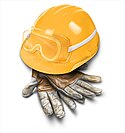Talk:Safety behaviors (anxiety)
| A fact from Safety behaviors (anxiety) appeared on Wikipedia's Main Page in the Did you know column on 30 April 2015 (check views). A record of the entry may be seen at Wikipedia:Recent additions/2015/April. |
Undue weight
I have tagged this article because it fails to give any attention to the fact that safety behaviour is expected in normal society and often a legal requirement. For example,
- Motorists and other road users are expected to drive safely rather than recklessly
- Employees and management are expected to behave safely at all times in the workplace
- Safety behaviour is an important element of many pastimes such as climbing, boating, exercise, &c.
Instead, the article focuses exclusively on psychological conditions without much regard to whether they are appropriate or not. A complete restructure of the topic seems needed which would start with a clear understanding that the world is indeed a dangerous place and that determining appropriate and sensible safety behaviour is then a matter of risk assessment and cost-benefit analysis. As examples of the sort of sources which discuss this in detail, see Impact of Behavior-based Safety Techniques and Human Safety and Risk Management. I have added another project which may be able to help with this and am pinging the corresponding Wikipedian. Andrew D. (talk) 12:41, 30 April 2015 (UTC)
Regarding undue weight, this article is a different topic
The safety behaviors you are discussing are a different topic than the safety behaviors discussed in this article. We likely should change the title to avoid such confusion (e.g., Safety Behaviors in Anxiety). The safety behaviors in this article are focused on a particular class of behaviors that are used to reduce anxiety and fear in those with anxiety related disorders. They are an important topic in risk for anxiety, maintenance of anxiety, and tx of anxiety. The safety behaviors you note in your response above are related to workplace and societal issues of safety of citizens. These are not behaviors that are related to anxiety, but rather safety of people in general. The name "safety behavior" is the same, but the topics are entirely different. Kind of like a topic on depression (the mood disorder), but saying that the article does not discuss the definition of depression that means a low spot or indentation. It would seem the best course of action would be to make the title more specific or to make clear at the top that if people are interested in citizen safety or safety measures that protect people, then they should see these other topics (whatever they may be, and then link to them). Thanks. Prof Haeffel (talk) 15:47, 30 April 2015 (UTC)
- I have reverted the bold move to safety behaviors (anxiety) as we have only just started discussion and so there is not yet consensus. I disagree that there is a fundamental difference in the nature of the topic. People naturally have anxieties about dangers and these form a spectrum from serious risks to imaginary or highly unlikely. For example, someone might be worried about terrorism and, to mitigate this risk, they may avoid crowded places or air travel. Is this "safety behaviour" a normal response or a medical problem? This seems to be a matter of opinion rather than a hard fact. See The medicalisation of shyness as an example of a source which shows some appreciation of this. The current page does not seem to show any such awareness. Andrew D. (talk) 16:52, 30 April 2015 (UTC)
Definitions
I looked at the current sources in the article and there are there seems to be only one review which states, "The systematic integration of findings is hampered by the variety of concepts used to describe safety behavior, and methodological differences in empirical studies. This article provides a definition and classification of safety behavior in contrast to adaptive coping strategies." So, this indicates a need for clear definitions, which we may have difficulty finding. Here's a link to a source which is based on the perspective of the safety consultant:
- The Psychology of Safety Handbook - The eyes of the beholder




